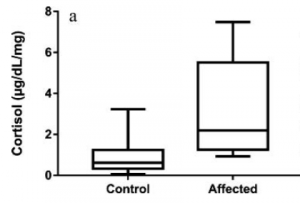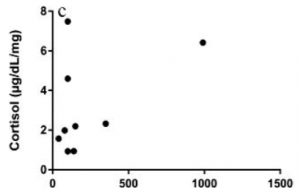New court ruling on Navy sonar has big implications
News, Ocean, Sonar Comments Off on New court ruling on Navy sonar has big implicationsA new court ruling could fundamentally change the standards that the Navy and National Marine Fisheries Service have been using to regulate Navy sonar, by requiring more areas to be set aside as off-limits to the Navy’s routine peacetime operations. A federal appeals court has ruled that simply determining that Navy activities will have “negligible impact” on populations is not sufficient; regulators must also, and separately, set standards for sonar use that assure the “least practicable adverse impact” on marine mammals and their habitats. (Download the ruling; it’s only 35 pages, not a bad read!) As those who have been following the evolution of the NMFS’s ongoing cycle of five-year authorizations for Navy activities will know, the routine procedure has been to dutifully tally the numbers of animals that may be affected—generally they predict relatively few injuries or deaths (more when explosives training is involved), as well as behavioral effects on millions of animals—and then to determine that the long term effects on each species’ population levels will be negligible. This negligible-impact finding then allows NMFS to issue permits allowing for the predicted effects.
NMFS has been presuming that negligible impact is sufficient to also satisfy the requirement for “least practicable impact.” Their basic argument was that you can’t get a lower impact than negligible. However, there were a couple of flaws in this approach. First, the threshold for population-level effects in this permit was presumed to be 12% of the regional population of any given species being able to hear, and have their behavior potentially changed, by sonar transmissions; clearly, there IS room to reduce this degree of impact. But more importantly to this court, the NMFS’s approach to determining what areas are “biologically important,” and so worthy of some protection from routine sonar operations, was found to violate the “least practicable impact” standard—and it appears that designating more protected habitat will be essential to meeting this standard.
Note: This court case concerns the SURTASS-LFA low-frequency active sonar, currently deployed on four US surveillance vessels, rather than the mid-frequency active sonar that has been the focus of most of the previous legal wrangling. This LFA lawsuit challenged routine, peacetime use of the sonar worldwide; by contrast, all the mid-frequency challenges up til now have only sought to constrain testing and training activities in Naval training ranges off the US coasts, not its widespread routine use by over a hundred Navy ships around the world. So this case has a limited immediate scope, though the underlying theme of setting aside more areas as off-limits is a core element of all the sonar and naval training legal challenges, and this new clarification by the courts on the separate requirement for “least practicable impact” could apply to all NMFS permitting.
This court ruling does not prescribe a new management plan; it merely found that the current one does not meet the letter of the law. This case is now remanded back to the district court for further deliberation. However, we are approaching the end of the 5-year authorizations that have been challenged here (2012-2017), so the most likely consequence of this ruling is that the NEXT round of authorizations, due in 2017, will need to take more care in meeting the “least practicable impact” standard, either by expanding the areas off-limits to sonar, or by more adequately justifying why NMFS feels they are meeting this standard in other ways.
An apparently deciding factor in the court ruling was a 2010 white paper written by four NMFS “subject matter experts,” Read the rest of this entry »

 The overall results are fairly clear-cut. Here’s a graph of the two groups; the boxes show the 3 quartiles of results in each group (the bottom of the box being the level that 75% of the animals were above; the line across the box showing the level where half the animals were above, half below; and the top of the box the level that 25% of the animals were above), with the bars outside the box showing the remaining scatter of individuals. The mean among controls was .87, and among the affected group the mean was 3.16
The overall results are fairly clear-cut. Here’s a graph of the two groups; the boxes show the 3 quartiles of results in each group (the bottom of the box being the level that 75% of the animals were above; the line across the box showing the level where half the animals were above, half below; and the top of the box the level that 25% of the animals were above), with the bars outside the box showing the remaining scatter of individuals. The mean among controls was .87, and among the affected group the mean was 3.16 A closer look at the results suggests that, as usual in field studies, there is a lot more going on than the means and medians suggest. Here we see a plot of the 9 affected setts, with distance to nearest turbine on the bottom axis. Interestingly, there is a wide scatter of results, with some setts (2 of the 9) showing levels very similar to the controls, about half (4 of the 9) having somewhat elevated levels, and only 3 setts being highly elevated, above the highest of the control setts. Our first image shows this skew, with the upper quartile of the affected box stretching far above the middle line (and thus pulling up the mean to a significant degree).
A closer look at the results suggests that, as usual in field studies, there is a lot more going on than the means and medians suggest. Here we see a plot of the 9 affected setts, with distance to nearest turbine on the bottom axis. Interestingly, there is a wide scatter of results, with some setts (2 of the 9) showing levels very similar to the controls, about half (4 of the 9) having somewhat elevated levels, and only 3 setts being highly elevated, above the highest of the control setts. Our first image shows this skew, with the upper quartile of the affected box stretching far above the middle line (and thus pulling up the mean to a significant degree).